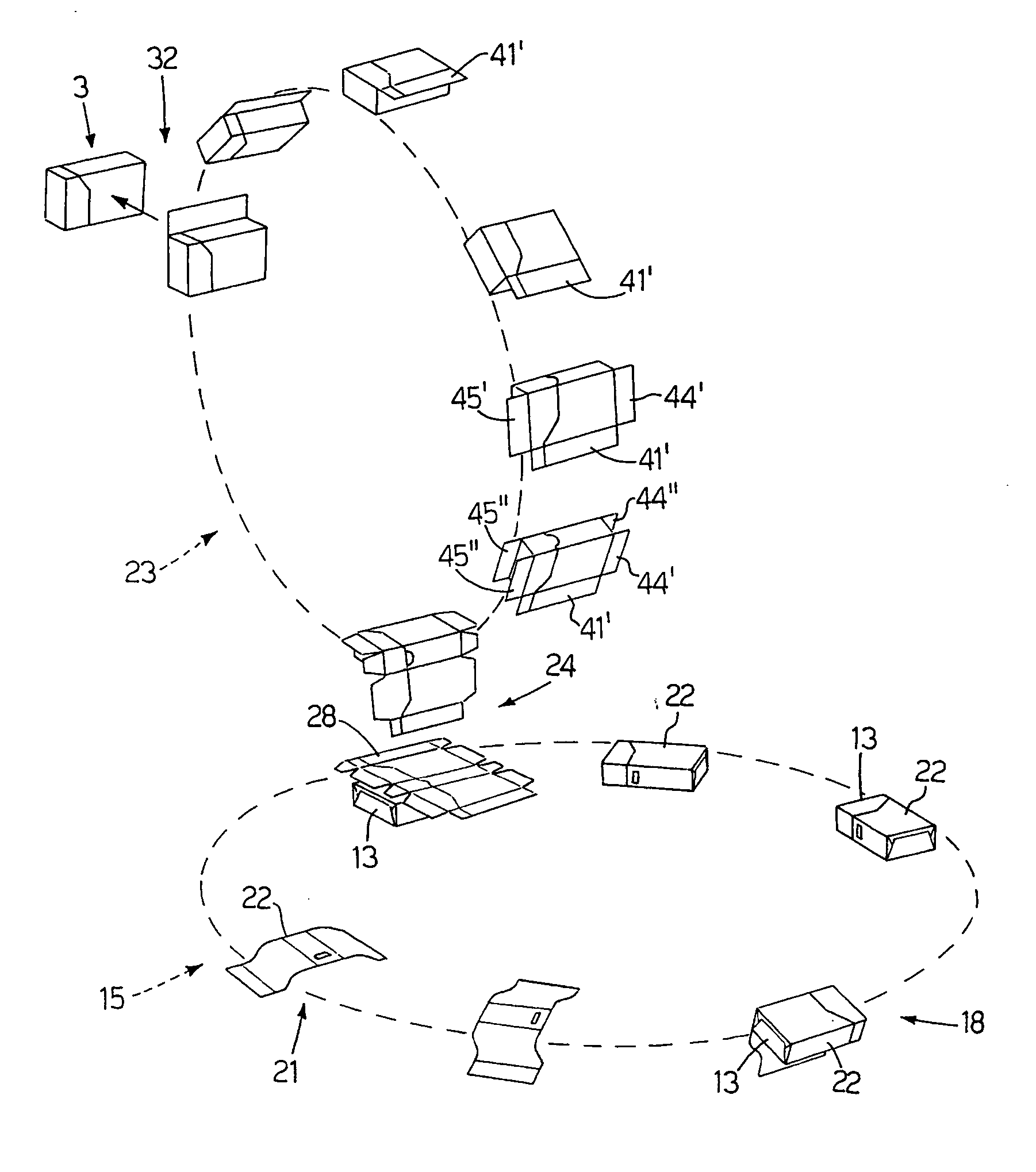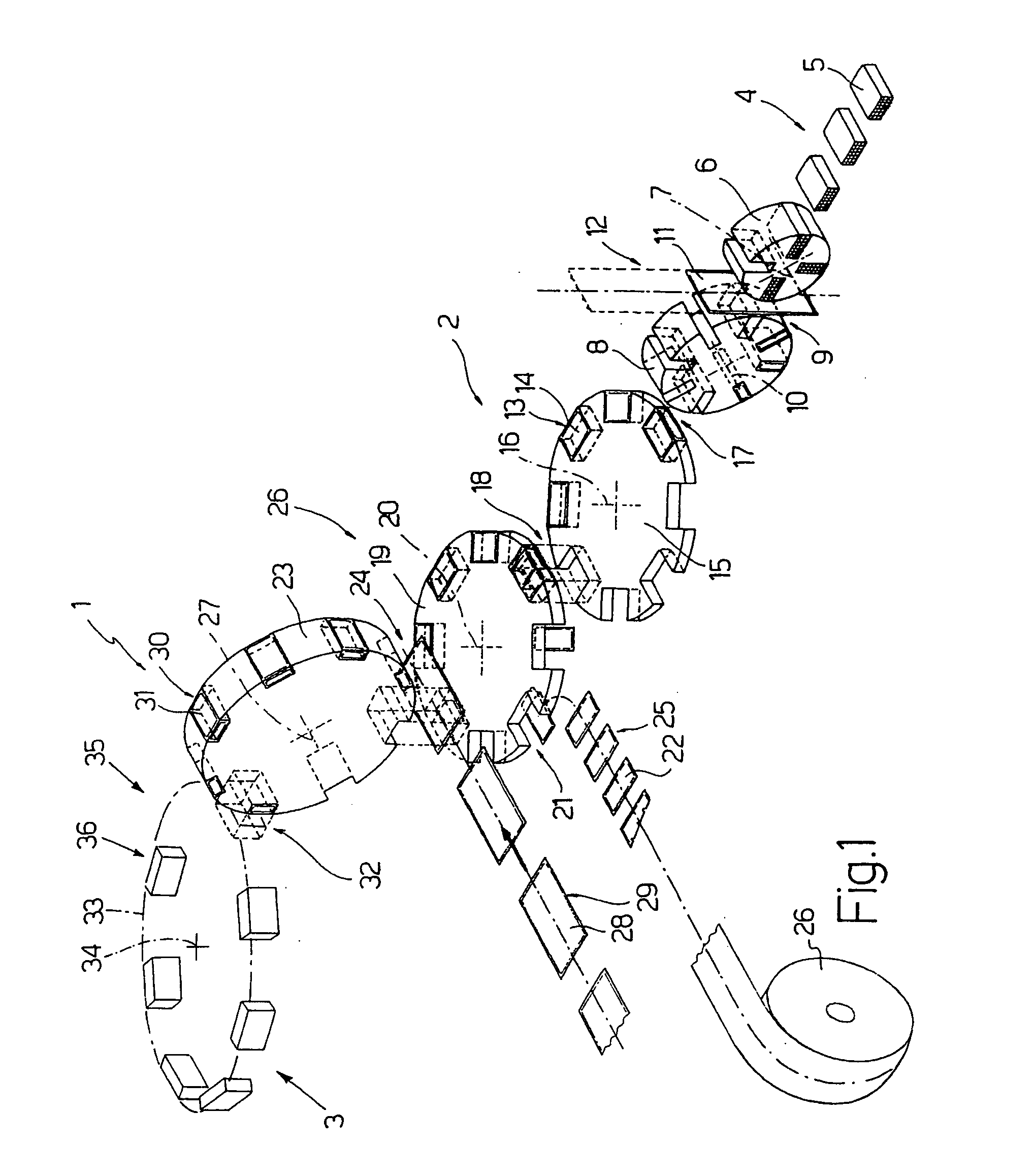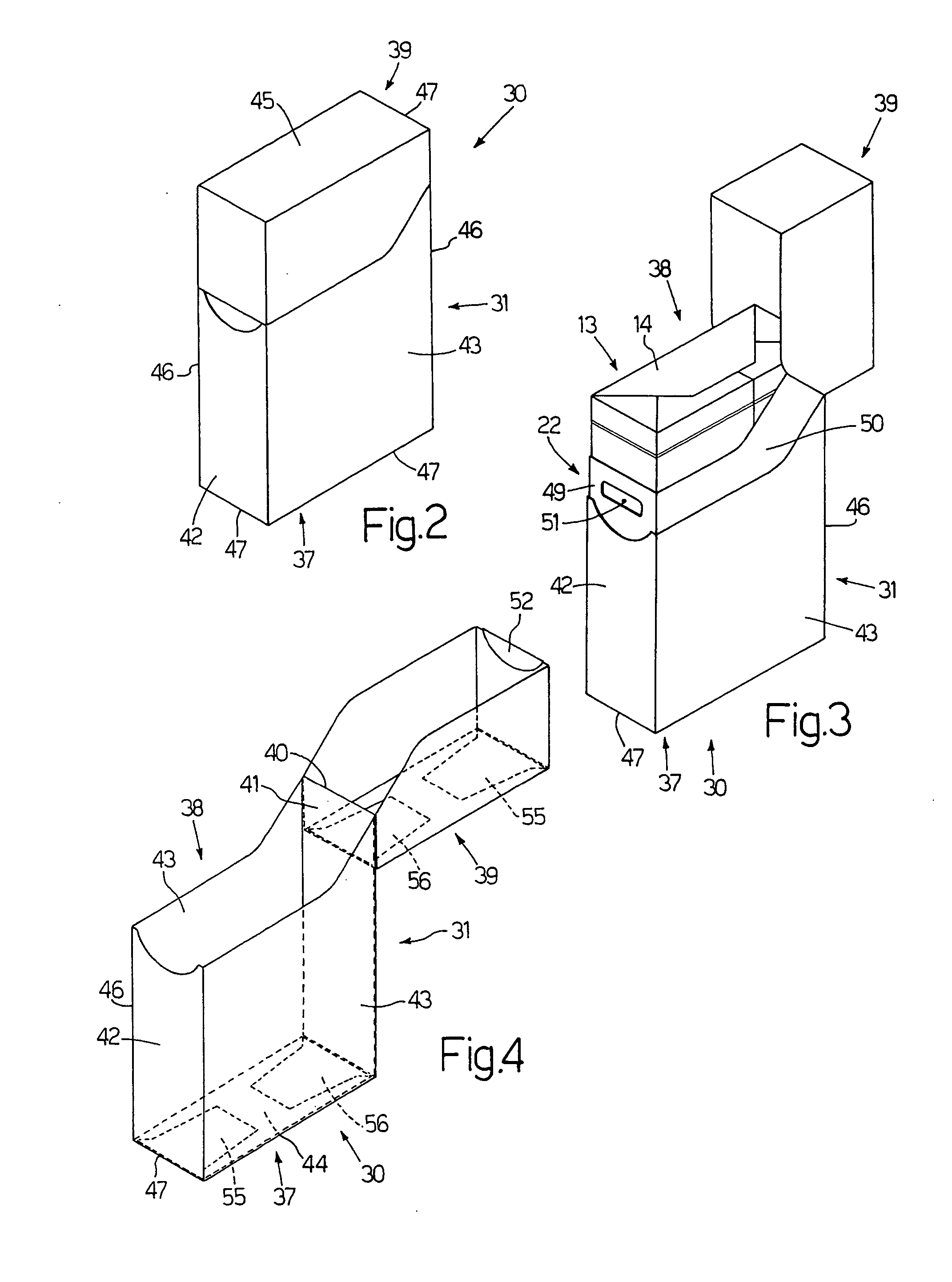Cigarette packing machine for producing rigid hinged-lid packets
- Summary
- Abstract
- Description
- Claims
- Application Information
AI Technical Summary
Benefits of technology
Problems solved by technology
Method used
Image
Examples
Embodiment Construction
[0019] Number 1 in FIG. 1 indicates as a whole a cigarette packing machine comprising a packing portion 2 and an output portion 3.
[0020] Packing portion 2 comprises a known line 4 (shown only partly) for forming groups 5 of cigarettes; and a first transfer wheel 6 rotating in steps about a respective horizontal axis of rotation 7 to receive groups 5 successively, and transfer groups 5 to a second packing wheel 8 at a transfer station 9. Second packing wheel 8 is mounted to rotate in steps about a respective axis of rotation 10 parallel to axis of rotation 7, and receives groups 5 of cigarettes successively, each together with a respective sheet 11 of foil packing material supplied to transfer station 9 by a feed line 12. Second packing wheel 8 folds each sheet 11 of packing material about respective group 5 of cigarettes to form a wrapped group 13, in which group 5 of cigarettes is enclosed in a so-called inner wrapping 14.
[0021] Packing portion 2 also comprises a third transfer w...
PUM
| Property | Measurement | Unit |
|---|---|---|
| Time | aaaaa | aaaaa |
| Angle | aaaaa | aaaaa |
Abstract
Description
Claims
Application Information
 Login to View More
Login to View More - R&D
- Intellectual Property
- Life Sciences
- Materials
- Tech Scout
- Unparalleled Data Quality
- Higher Quality Content
- 60% Fewer Hallucinations
Browse by: Latest US Patents, China's latest patents, Technical Efficacy Thesaurus, Application Domain, Technology Topic, Popular Technical Reports.
© 2025 PatSnap. All rights reserved.Legal|Privacy policy|Modern Slavery Act Transparency Statement|Sitemap|About US| Contact US: help@patsnap.com



